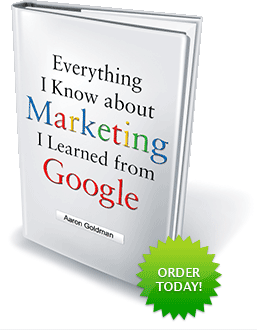Executive Summary:
Where do Google searches take place?
Everywhere. Google-owned properties. Google-syndicated properties. Mobile phones. You name it — if it’s digital, Google’s there. Google doesn’t make you come to Google to Google. Google brings Google to you.
Barack Obama took a similar approach in his 2008 US Presidential campaign. He created a hub-and-spoke model with himself at the center to reach voters on their turf and connect with them on the issues that mattered most. Obama laddered people up from personal supporters to social supporters to advocates.
Businesses must ladder up their customers. State Farm is doing this. Its brand promise for years has been “Like a Good Neighbor, State Farm is There.” Where’s there? Wherever its customers are.
Break down your brand into sharable bits. Use your domain as a hub. Don’t just build it and expect people to come.
Select Quotes:
“The idea of websites on an island doesn’t work anymore.”
— Michael Lazerow, CEO, Buddy Media, @Lazerow
“Sometimes, you have to step away from the spreadsheet.”
— Glenn Fishback, Senior Vice President, Adify Media, @GlennFishback
“The key is to be a part of people’s lives. People will always prefer to business with friends.”
— Marty Kohr, Integrated Marketing Communications Faculty, Northwestern University Medill School, @MartyKohr2
“Marketers’ only job is to figure out where your audience is.”
— Cory Treffiletti, President and Managing Partner, Catalyst SF, @ctreff
Final Thought:
After all, being where your audience is must be more than a state of being.
Updates:
Aug. 9, 2010: Practicing what I preach, McGraw-Hill and I have put the hub-and-spoke model into play to promote the book. GoogleyLessons.com is the hub and we’ve got spokes set up via Facebook, Twitter, YouTube, Slideshare, my digital marketing blog, MediaPost, and every participant in my Blog Tour.
Aug. 11, 2010: Here’s a quick screencast of the hub-and-spoke model in action.
Mar. 24, 2011: Bill Gurley explains Google’s “Be Where your Audience Is” approach using the analogy of building a castle around your moat in his post, “The Freight Train that is Android.”
May 11, 2011: At today’s I/O developer conference, Google announced the new Chromebook. “Chromebooks are built and optimized for the web, where you already spend most of your computing time. So you get a faster, simpler and more secure experience without all the headaches of ordinary computers.” In other words, now you can do more searches and click on more ads.
July 2, 2011: At first, I didn’t think Google was taking its own medicine with Google+, the new social, check that, sharing network. Nowhere in the UI is a Google search box. And, while I still think that’s a missed opportunity — that will be corrected — what I’ve started to realize is that by integrating its sharing network into the Google experience through a fixed placement on a new black bar atop Google.com, Gmail, and other Google properties, it really is being where its audience is. More initial observations on Google+ in this post: Nonplussed by Google+.
August 19, 2011: Looking for Facebook advertising best practices? Look no further than the deck I presented at SES San Francisco.






